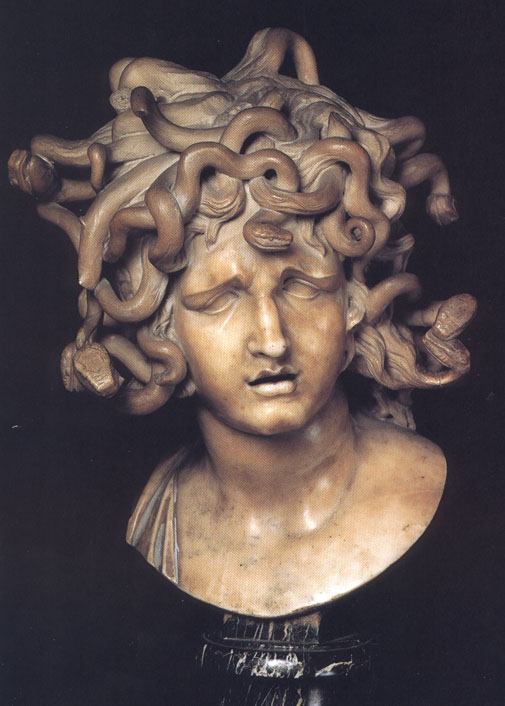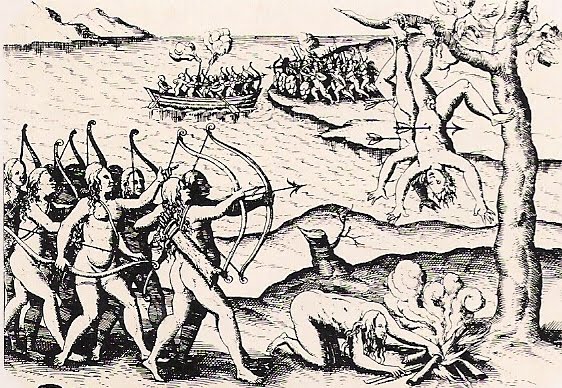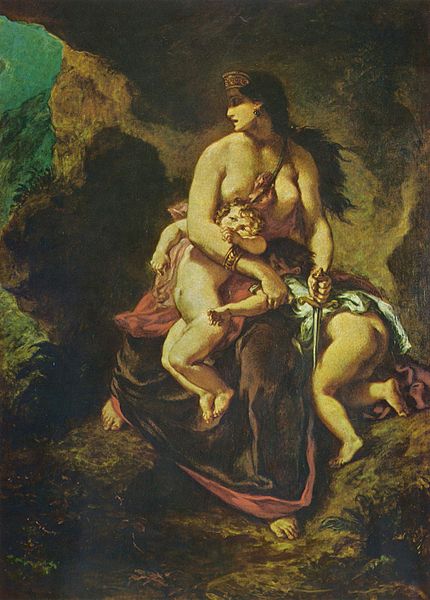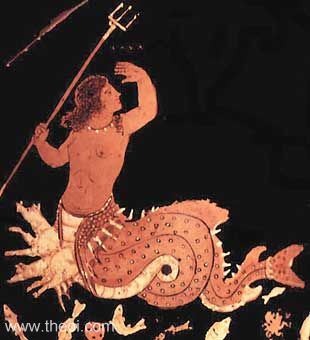Monstrous Females & Female Monsters

Medusa - Peter Paul Rubens
Medusa, originally a beautiful young woman whose crowning glory was her magnificent long hair, was desired and courted by many suitors. Yet before she could be betrothed to a husband, Poseidon (Neptune) found her worshipping in the temple of Athena (Minerva) and ravished her. Athena was outraged at her sacred temple being violated, and punished Medusa by turning her beautiful tresses into snakes and giving her the destructive power to turn anyone who looked directly at her into stone.
In both Greek and Roman mythology, Perseus, attempting to rescue his mother Danae from the coercive King Polydectes, needed to embark on the dangerous venture of retrieving Medusa's head. With the help of Athena and Hermes - magic winged sandals, a cap, a pouch and a mirror-like shield, he fought her and beheaded her by viewing her image in the mirror of his shield rather than looking at her directly. From her decapitated head sprang the winged horse Pegasus and the giant Chrysaor, who became king of Iberia. Medusa's sisters, the Gorgons, chased after him, but were unable to catch him because his magic cap made him invisible.
Perseus was then able to use Medusa's head as a weapon during other battles (which included rescuing Andromeda), but he eventually returned it to Athena, who then placed it at the center of her Aegis as a symbol of her power, and her own capacity to turn her enemies into stone.
Historically, before ancient Greece, Medusa was worshipped by the Libyan Amazons as a Serpent -Goddess, and associated with the destroyer aspect Anath (also known as Athene) of the Triple Goddess in North Africa and Crete.
http://www.webwinds.com/thalassa/medusa.htm
Medusa - Bernini

The Amazons

The Amazons
Amazons were said to have lived in Pontus, which is part of modern day Turkey near the shore of the Black Sea. There they formed an independent kingdom under the government of a queen named Hippolyta. Herodotus called them Androktones ("killers of men).
In some versions of the myth, no men were permitted to have sexual encounters or reside in Amazon country; but once a year, in order to prevent their race from dying out, they visited the Gargareans, a neighbouring tribe. The male children who were the result of these visits were either killed, sent back to their fathers or exposed in the wilderness to fend for themselves; the females were kept and brought up by their mothers, and trained in agricultural pursuits, hunting, and the art of war. In other versions when the Amazons went to war they would not kill all the men. Some they would take as slaves, and once or twice a year they would have sex with their slaves.
In the Iliad, the Amazons were referred to as Antianeirai (those who fight like men")."
http://en.wikipedia.org/wiki/Amazons
Medea About to Murder her Children

Eugène Delacroix (1798–1863)
Scylla

SCYLLA
SCYLLA was a monstrous sea goddess who haunted the rocks of certain narrow strait opposite the whirlpool daemon Kharybdis. Ships who sailed too close to her rocks would lose six men to her ravenous, darting heads. Homer describes Scylla as a creature with twelve dangling feet, six long necks and grisly heads lined with a triple row of sharp teeth. Her voice was likened to the yelping of dogs. This description of Scylla is probably derived from the imagery of words associated with her name : namely, "hermit-crab" (Greek skyllaros), "dog" and "dog-shark" (skylax), and "to rend" (skyllô). In classical art she was depicted as a fish-tailed sea-goddess with a cluster of canine fore-parts surrounding her waist.
Late classical writers say that she was once a beautiful nymph who was loved by the sea-god Glaukos. She has a jealous rival in the witch Circe who used her magics to transform Scylla into a monster. The old poets, however, imagined Scylla as a creature who was born monstrous.
http://www.theoi.com/Pontios/Skylla.html